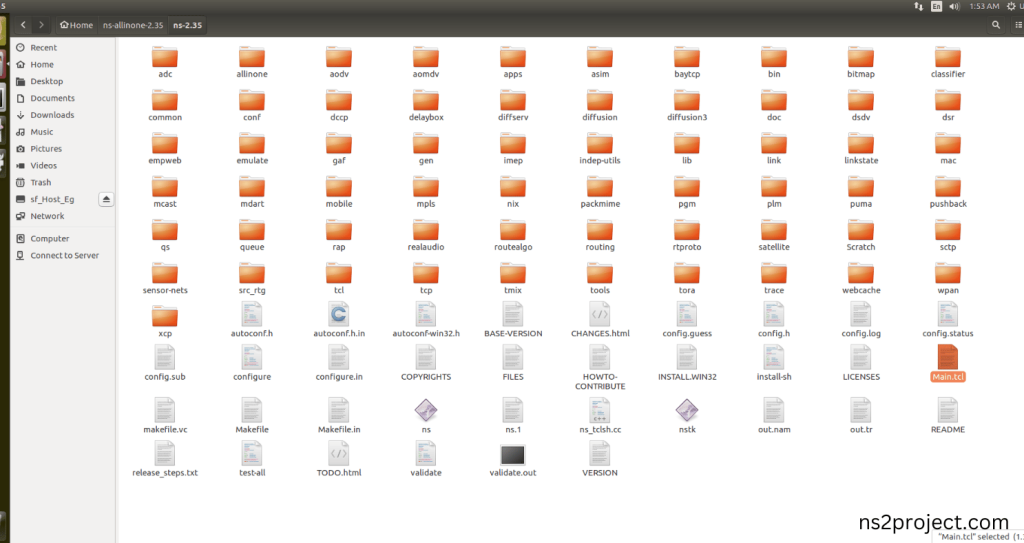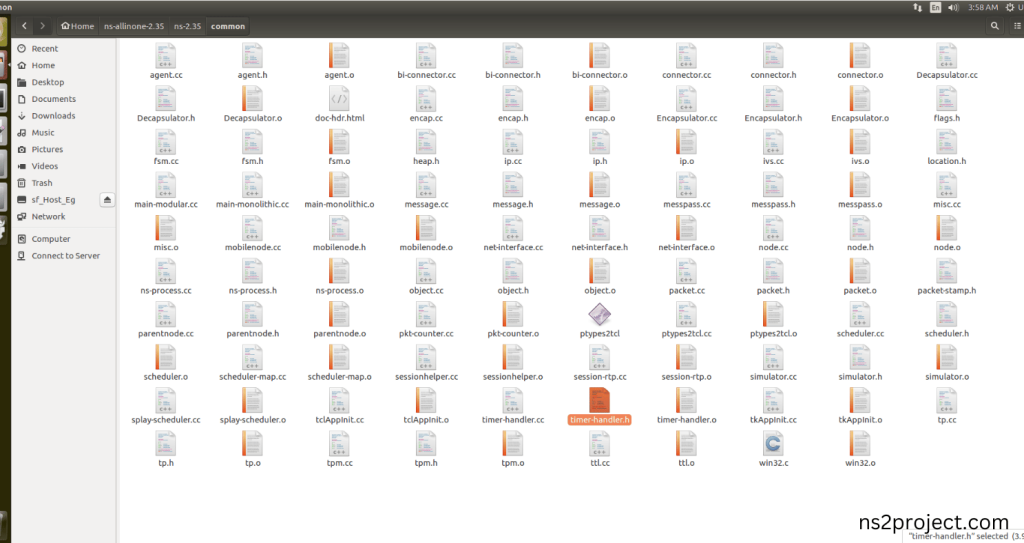How to Install TIME HANDLER.H Packages in Ns2
To import Time-handler.h packages in NS2 tool read out the steps that are listed below, get best research ideas on how to apply it in your projects. The structures and procedures pertaining to handling time events in the simulation are defined in the Time-handler.h header file. Because the NS-2 simulation engine is event-driven, scheduled events—like packet transmissions, receptions, and processing—occur at predetermined times. By monitoring the simulation clock and making sure that events are carried out in the proper order, the Time Handler is essential to the management of these events.
TCL script, users utilize time-handler.h’s functionalities in an indirect manner. Users can specify the timing of events using TCL commands, which are internally handled by the C++ backend’s time-handler mechanism. The C++ logic in time-handler.h handles the detailed time management, while users manage event timing at a high level in TCL.
Here, we have an exciting and exclusive article that is just popped out for you to notify the steps that are required for the installation of Time-handler.h.
PRE-REQUISITES:
- Fresh installation of Ubuntu 16.04 LTS:
Screenshot:

2.NS-ALLINONE-2.35 Installation:
Screenshot:

3.NS-2.35 Installation:
Screenshot:

Here, Percentage (%) symbol Denotes the successful installation of the NS 2.35 Simulator.
Screenshot:

HEADER FILE VERIFICATION:
- Locate to the ns-2.35 folder:
Screenshot:

2.Create the Main.tcl file in the scratch folder:
Next we need to create the Main.tcl file by using text editor in the ns-2.35 folder.
Screenshot:

Next we need to paste the below code to the Main.tcl file and save the file in the ns-2.35 folder.
Code:
set ns [new Simulator]
set tracefile [open out.tr w]
set namfile [open out.nam w]
$ns trace-all $tracefile
$ns namtrace-all $namfile
proc finish {} {
global ns tracefile namfile
$ns flush-trace
close $tracefile
close $namfile
exec nam out.nam &
exit 0}
set n0 [$ns node]
set n1 [$ns node]
set n2 [$ns node]
set n3 [$ns node]
set n4 [$ns node]
set n5 [$ns node]
$ns color 0 green
$ns duplex-link $n0 $n1 1Mb 10ms DropTail
$ns duplex-link $n1 $n2 1Mb 10ms DropTail
$ns duplex-link $n2 $n3 1Mb 10ms DropTail
$ns duplex-link $n3 $n4 1Mb 5ms DropTail
$ns duplex-link $n4 $n5 1Mb 5ms DropTail
set tcp [new Agent/TCP]
$ns attach-agent $n0 $tcp
set sink [new Agent/TCPSink]
$ns attach-agent $n5 $sink
$ns connect $tcp $sink
set ftp [new Application/FTP]
$ftp attach-agent $tcp
$ns at 0.5 “$ftp start”
$ns at 4.5 “$ftp stop”
$ns at 5.0 “finish”
$ns run
Screenshot:

3.Open the Terminal:
Next, we need to launch the terminal by right clicking the mouse in the ns-2.35 location.
Screenshot:

Screenshot:

4.NS-2.35 Configuration && Building Process:
Next, we need to configure and build the ns-2.35 folder to make the Created files need to work in ns-2.35 configuration.
Command: “./make”
Screenshot:

Screenshot:

Screenshot:

5.Importing Time-handler.h:
Here we imported the Time-handler.h header file code indirectly accessed the Time-handler header ($ns at 0.5 “$ftp start”) to scheduling a timer and schedule an event to occur after a specified delay in this example program. Here we highlighted the code line that highlighted which is internally accessed Time-handler.h that we will show class file that used in this code via Common folder.
Screenshot:

Screenshot:

Here we will show the header file by opening Time-handler.h file to show the class or function imported from the Time-handler.h in the example code. The Highlighted Lines in the header code refers to the tcl script code ($ns at 0.5 “$ftp start”) to scheduling a timer. It corresponds to the sched(double delay) method in the C++ header, where you schedule an event to occur after a specified delay within the simulation.
Screenshot:

Screenshot:

6.Executing the Example Program for Packet Header:
Then we need to run the Example program for Packet Header to view output of the program.
Command: “./ns Main.tcl”
Screenshot:

Here we shown the output of the example program by using Time-handler.h.
Screenshot:

Screenshot:

Screenshot:

In the NS 2.35 Simulation Example Program, the Time-handler.h Header file is successfully imported. Having trouble with the application of TIME-HANDLER.H PACKAGES in your research? Our experts can assist you with top project ideas. Reach out to the ns2projects.com team for the best research guidelines in this area, and we will offer you the most excellent research solutions.







